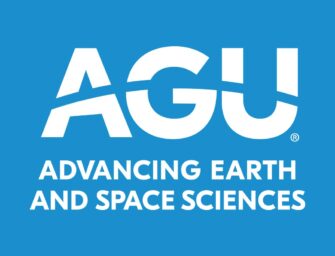Serving the Worldwide Earth and Space Science Community
Throughout our history, AGU has evolved to reflect the needs of our members and the broader scientific community. In her last blog post, AGU’s president, Carol Finn, offered a glimpse into how AGU is collaborating with societies and scientists around the world by discussing our recent meeting with the Japan Geoscience Union (JpGU).
You may wonder though, how global of an organization is AGU? The answer is very global. Although our name says American, our membership and participation represents a growing community of Earth and space scientists around the globe.
Here are some interesting facts:
Today, nearly 40% of AGU members reside outside the United States compared to just 32% in 2000. Notable membership growth has occurred in Latin America, Southeast Asia, and Western Pacific in comparison to Canada, Western Europe, and Africa.
In 2013, more than 34% of our Fall Meeting attendees came through U.S. immigration lines to attend the meeting compared to less than 29% just five years ago. Clearly, international attendance continues to grow as a percentage of total attendance at our meetings.
The scientists publishing with AGU, as well as those using our journals, also reflect increased global participation. Between July 2013 and June 2014, Asia ranked second in visits to AGU journal websites, and its percentage of total visits continues to grow. And individuals or institutions in the United States comprised only a slice of total full text downloads of AGU journals in June 2014.
Visits to AGU journal websites between July 2013 and June 2014.
Location of individuals or institutions downloading the full text of AGU journal articles.
This global expansion isn’t limited solely to AGU. In fact, the number of Earth and space science researchers outside of the U.S. is growing, and according to the Royal Society, between 1996 and 2008 the proportion of papers produced with authors from more than one country increased by 10%.
Earth and space science researchers worldwide.
Last year the AGU Board and Council discussed these international trends and considered how we can better serve the growing Earth and space science community. Our conclusion: AGU provides value to scientists and scientific organizations around the world by fostering their collaborations and creating opportunities for them to connect and engage with one another. We provide a forum in which they can exchange and disseminate their science within and outside the scientific community.
That emphasis on collaboration and creating opportunities for connections and exchange is incredibly important, and something we are very committed to following through on. Carol’s post about our meeting with JpGU and our plans for meeting collaboration is just one example of how AGU will continue to build upon and expand past partnerships, and create new ones, with colleagues around the globe. And all of this work is guided by our strategic objectives and by advice from our Committee on International Participation, chaired by Sue Webb, AGU’s International Secretary.
As Tom Friedman, the noted author and New York Times columnist, has pointed out in his book The World Is Flat: A Brief History of the Twenty-First Century, historical and geographical divisions are becoming irrelevant. All countries have increasing opportunities to engage and interact on a level playing field in a world economy. In the scientific world, AGU can help to foster such opportunities, allowing us all to work together in advancing new discoveries and addressing global challenges which affect us all, such as climate change, hazards and disasters, and natural resource limitations.




Your lack of appreciation of this internationalization and the missing of representation on the council and board are obvious. Why do you mention ASIA and yet break down the rest of the world into so many different regions and even nations? Why do you mention interaction only with Japan, while there are many meetings and collaborations going on with many other countries and organizations in Asia? Why is it that American citizens who are members of AGU but who work in Asia are not tapped on? Why are there no representatives of students from Asia who study in the USA and actively participate in AGU meetings? Why does AGU work together with AOGS and other organizations, yet this information never makes it into such blogs as yours?
Jason – Thank you for your response. As I mentioned in the post, we recognize that our membership spans the globe, and we are committed to meeting the needs of our members, in the U.S. and around the world. My intention with this post was to show a snapshot of the international nature of the organization, not the exhaustive view. I don’t know if you have seen this section of our website, but it includes rosters for the Board, Council, and AGU’s various committees – the majority of which include international participants. The same can be said of the editorial Boards for most of our journals. And, we have a committee on international participation that is working to assess our current efforts and help guide us in further developing and expanding them. Also, we have relationships and memorandums of understanding with several international or regional scientific societies, with whom we partner on a variety of efforts. While these efforts are certainly not definitive, I do believe that we are working diligently to understand and meet the needs of the entire Earth and space science community, and that we are on a good path for successfully moving forward.